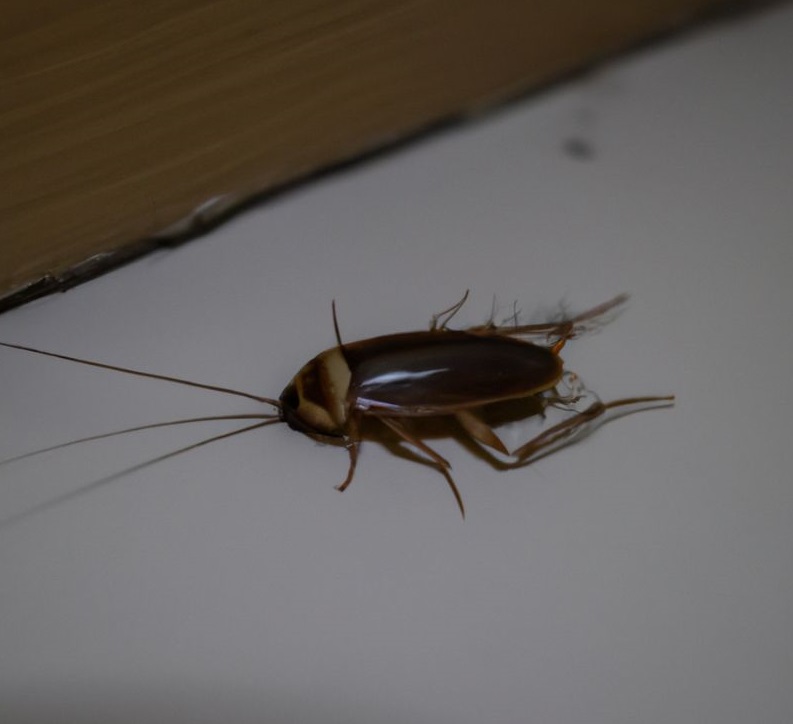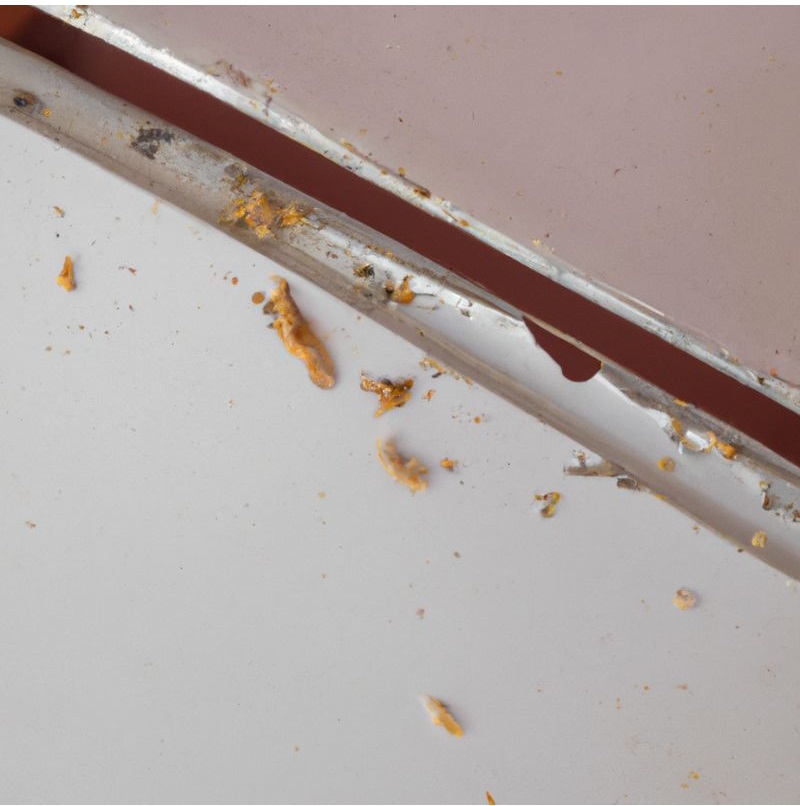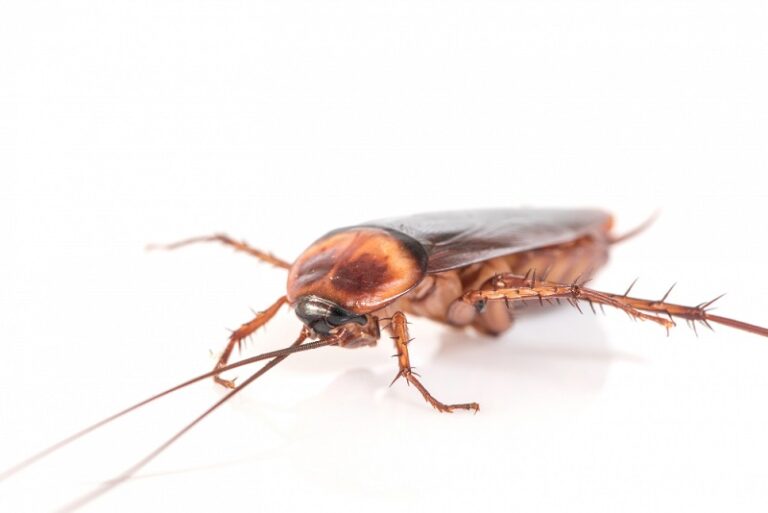Discover effective strategies how to get rid Of german roaches from your home. Learn proven methods for identifying, treating, and preventing these pests to ensure a roach-free environment.
Dealing with German roaches is never pleasant. These small but persistent pests can make life uncomfortable, particularly when they invade your kitchen or bathroom. If you’re wondering how to get rid of German roaches, you’re in the right place! This guide will explore what attracts these critters, how to identify them, and, most importantly, how to kick them out of your home for good. Let’s get started!
Key Takeaways
- German roaches are small, fast, and persistent pests that are attracted to food, water, and shelter.
- Confirming their presence involves spotting live roaches, droppings, egg casings, and musty odors.
- Effective control methods include sanitation, using baits and traps, applying insecticidal dust, and natural remedies.
- Long-term prevention is critical to avoid re-infestation.
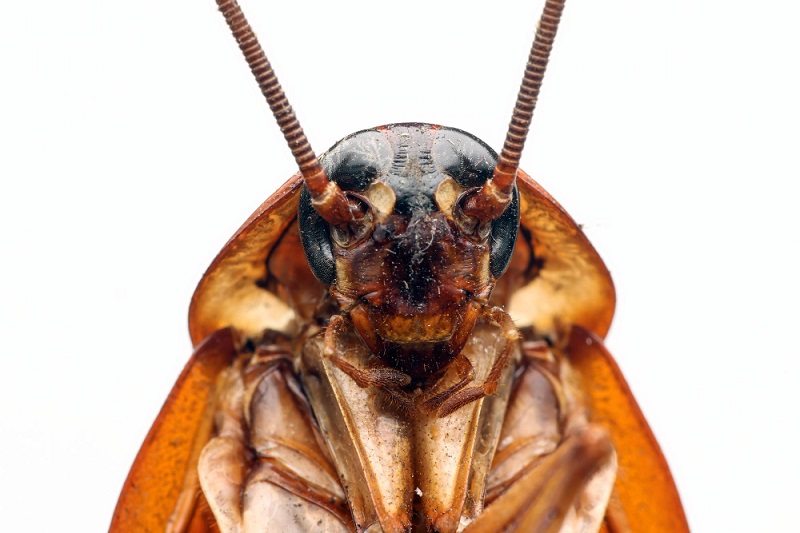
What Do German Roaches Look Like?
German roaches are among the most common species of cockroaches found in homes. Here’s how to spot them:
- Size: Adults are typically between ½ to ⅝ inches long.
- Color: Light brown or tan with two dark parallel lines running from their head down to their wings.
- Wings: They have wings, but they rarely fly. They prefer to run, and they’re incredibly fast!
- Nymphs: Baby German roaches (nymphs) are darker, almost black, with a smaller size and no wings.
These features make them distinguishable from other species like American or Oriental roaches.
What Attracts German Roaches to a Home?
Understanding what attracts German roaches to your home is the first step toward controlling and eliminating them. Here are the top reasons why they might target your house:
- Food Sources:
- Leftover food crumbs and spills.
- Greasy residues in the kitchen, particularly near ovens or stoves.
- Unsealed food containers, especially sweets, starches, and proteins.
- Water:
- Leaky pipes or faucets.
- Condensation in bathrooms or under sinks.
- Wet sponges, dishes, or damp towels left unattended.
- Shelter:
- Cluttered spaces like piles of paper, cardboard, or trash.
- Warm, humid areas such as behind refrigerators or stoves.
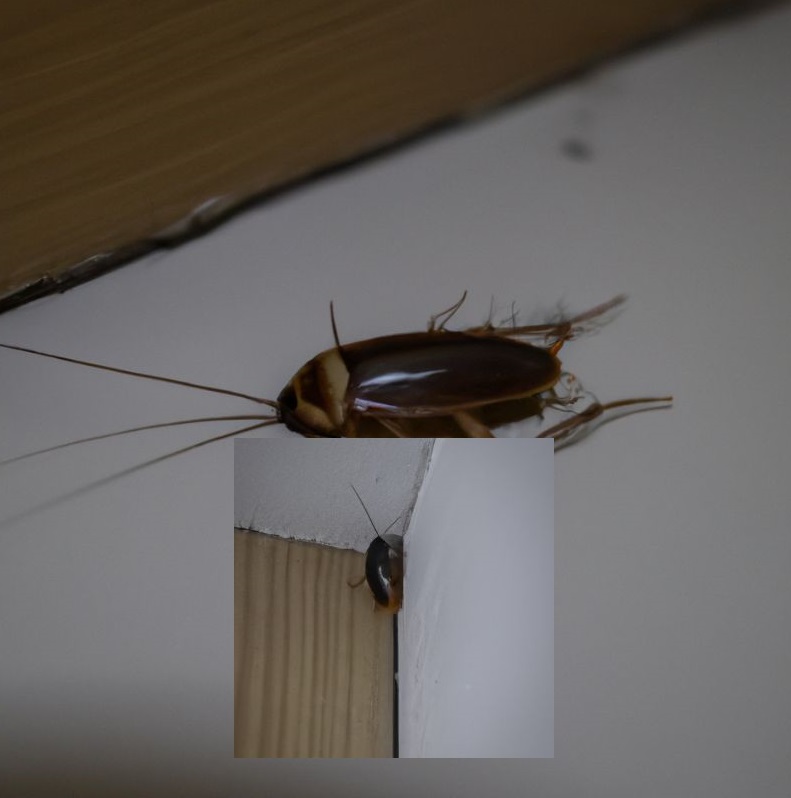
How German Roaches Hide in Your Home
German roaches are masters at hiding. These pests love tight, dark spaces that are close to food and water sources. Some common hiding spots include:
- Cracks and crevices in walls, countertops, or cupboards.
- Behind appliances such as refrigerators, microwaves, or dishwashers.
- Under sinks and in bathroom cabinets, where there may be moisture.
- Inside electronics, particularly those that generate heat like coffee makers or clocks.
Roaches are nocturnal, so spotting one during the day could indicate a heavy infestation.
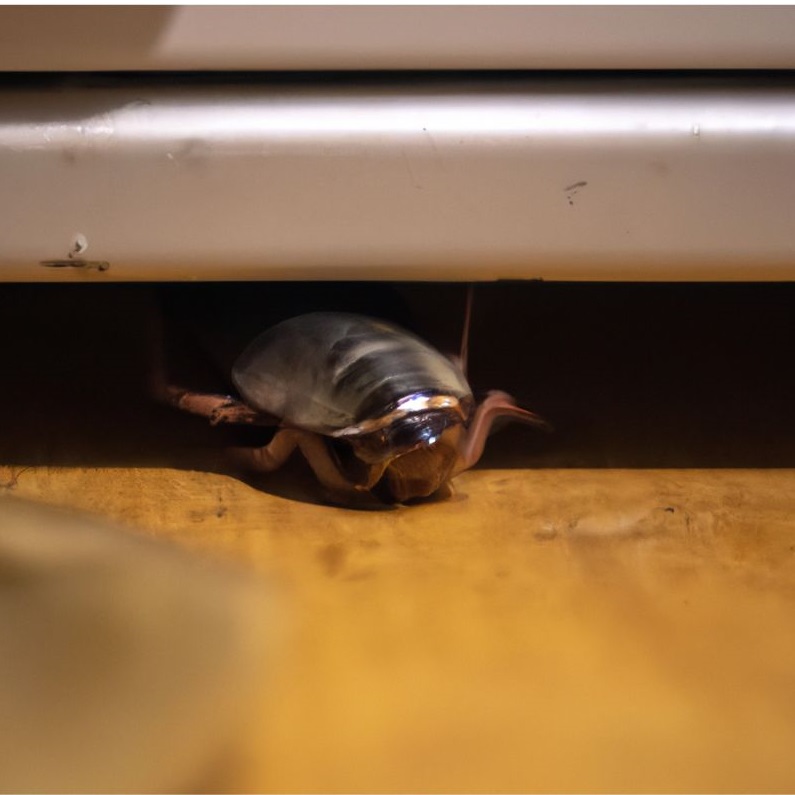
How to Confirm You Have a German Roach Infestation
Suspecting you have a German roach problem? Here are ways to confirm:
- Spotting Live Roaches: Seeing one or two live roaches, particularly during the day, is often a sign of a more significant infestation.
- Droppings: Small black droppings resembling pepper flakes or coffee grounds found near their hiding places.
- Egg Casings: Look for small, brown, purse-shaped casings called oothecae, which are deposited in warm, humid areas.
- Musty Smell: A strong, oily odor can signal a heavy infestation. The larger the colony, the stronger the scent.
What kind of damage is done by German roaches in your home?
German roaches can cause significant damage in your home, both directly and indirectly. While they might not chew through walls or destroy structures, the harm they cause is primarily related to health risks, contamination, and damage to food supplies and electronic devices.
Health Risks and Disease Transmission
German roaches are known to carry bacteria, pathogens, and allergens that can lead to various health problems. Here’s how they pose a danger:
- Bacteria: Roaches crawl through garbage, drains, and other unsanitary areas, picking up bacteria like E. coli, Salmonella, and Staphylococcus. When they come in contact with food or surfaces, they can transfer these bacteria, causing food poisoning or infections.
- Allergens: Roach droppings, shed skin, and saliva contain allergens that can trigger asthma and allergic reactions, especially in children and the elderly. In fact, studies suggest that up to 60% of urban residents may be allergic to cockroaches.
- Parasites: Roaches can carry parasitic worms, such as hookworms or pinworms, which can infect humans.
Food Contamination
German roaches are particularly fond of food, and they will invade your kitchen in search of it. They spoil food by:
- Contaminating surfaces: Roaches leave droppings, saliva, and body parts on countertops, tables, and utensils, making food preparation areas unsanitary.
- Eating through packaging: They chew through paper, plastic, or cardboard containers to access food, leading to spoilage.
- Spreading odors: Roaches release a musty, foul odor that can taint food and permeate your kitchen.
Damage to Electronics
German roaches are drawn to warmth and moisture, making electronic devices like TVs, computers, microwaves, and refrigerators prime hiding spots. Here’s how they can damage electronics:
- Short-circuiting devices: Roaches may chew on or nest in wires, causing malfunctions or even short circuits.
- Clogging internal components: Roach droppings and bodies can block ventilation systems, resulting in overheating and reduced functionality.
Damage to Household Materials
While German roaches don’t typically chew through solid materials, they can cause indirect damage:
- Stains and droppings: Roaches leave behind brownish or dark stains and droppings that can be difficult to clean from walls, floors, or fabric.
- Contaminating paper products: Roaches are attracted to cardboard, paper, and books, particularly those stored in humid areas. They might hide among these materials, leaving droppings, which can damage or destroy them over time.
Emotional and Mental Stress
Having a German roach infestation can also cause emotional stress and discomfort. Constantly seeing these pests, dealing with food contamination, and the potential health risks can create anxiety, especially for those who are sensitive to cleanliness or have a fear of insects.
German roaches can cause considerable damage in your home, from spreading diseases to contaminating food, damaging electronics, and causing emotional stress. Getting rid of them quickly and thoroughly is essential to protect your home and health.
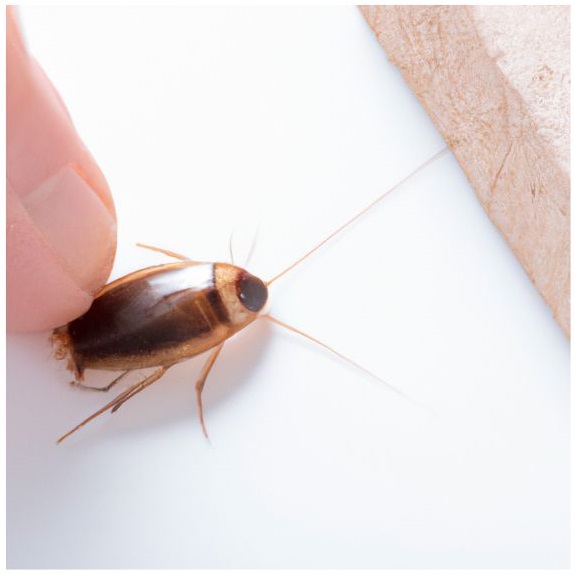
How to Get Rid of German Roaches: Step-by-Step Process
Now to the most critical part — how to get rid of German roaches. Here’s a step-by-step guide that incorporates multiple strategies to eliminate them effectively.
- Sanitation Is Key
- Clean thoroughly: Focus on kitchens, bathrooms, and any cluttered areas. Sweep floors, wipe countertops, and clean under appliances.
- Seal food properly: Use airtight containers and avoid leaving food out overnight.
- Take out the trash daily: Keep garbage bags sealed tightly.
- Remove Water Sources
- Fix leaky faucets and pipes.
- Dry out sinks and bathtubs after use.
- Avoid leaving wet sponges or towels around.
- Seal Entry Points
- Use caulk or sealant to fill in cracks and gaps around windows, doors, and cabinets.
- Install door sweeps and weather stripping to reduce entry points.
- Use Bait Stations and Gels
- Roach bait: Set up bait stations near roach activity. These contain chemicals that roaches bring back to their nest, poisoning the entire colony.
- Gel baits: Apply gel in crevices and cracks where roaches frequent. These are highly effective for targeting hidden roaches.
- Apply Insecticidal Dust
- Use insecticidal dust like diatomaceous earth or boric acid in hard-to-reach areas. These substances damage the exoskeletons of roaches, causing dehydration and death.
| Insecticide | Effectiveness | Safety for Pets/Children |
| Boric Acid | High | Moderate (Caution) |
| Diatomaceous Earth | Moderate | Safe when food-grade |
- Set Traps
- Sticky traps: Place these near common hiding spots to monitor roach activity and trap stray roaches.
- Jar traps: Use glass jars with a thin layer of petroleum jelly inside as a DIY trap. Place some bait inside and watch roaches get stuck!
- Natural Remedies
- Essential oils: Peppermint or tea tree oil can deter roaches when sprayed in problem areas.
- Baking soda & sugar: Mix equal parts as bait. The sugar attracts the roaches, and the baking soda kills them by creating gas in their digestive system.
- Call a Professional
If all else fails, call a pest control expert. They will assess the severity of the infestation and apply industrial-strength treatments.
German Roach Infestation Data
According to recent studies, German roaches account for around 75-90% of indoor roach infestations in urban areas in the U.S. Due to their rapid reproduction rate, a single pair of roaches can produce up to 400 offspring within six months.
| Region | Percentage of Homes Affected |
| Urban U.S. Cities | 75-90% |
| Rural Areas | 30-50% |
A survey conducted by NPMA in 2023 also revealed that 41% of homeowners noticed a significant roach population increase during warmer months, particularly in areas with poor sanitation.
How Long Does It Take to Get Rid of German Roaches?
The timeline for eliminating German roaches varies based on the severity of the infestation and the methods used. On average, it can take anywhere from two weeks to six months to fully eradicate them. Consistency is key, especially in maintaining cleanliness and preventing re-infestation.
Preventing Future Infestations
Once you’ve figured out how to get rid of German roaches, the next step is ensuring they don’t come back. Here’s how to prevent future infestations:
- Maintain cleanliness: Regularly clean kitchen areas, bathrooms, and any damp spaces.
- Check for leaks: Keep plumbing in good shape and fix any moisture issues immediately.
- Inspect incoming items: Roaches often hitchhike into homes in bags, boxes, and packages.
- Declutter regularly: Don’t let paper, cardboard, or other materials accumulate.
FAQs on How to Get Rid of German Roaches
Q1: How fast do German roaches reproduce?
A single pair can produce up to 400 offspring in six months.
Q2: Can I use DIY remedies to get rid of them?
Yes! Essential oils, baking soda, and sticky traps are effective DIY options.
Q3: Are professional exterminators necessary?
For severe infestations, professional help is highly recommended for quicker results.
Q4: How long does it take to eliminate German roaches?
It typically takes 2 weeks to 6 months depending on infestation size and treatment methods.
Now that you’re equipped with this detailed guide on how to get rid of German roaches, you can confidently tackle any roach invasion. Happy pest control!


